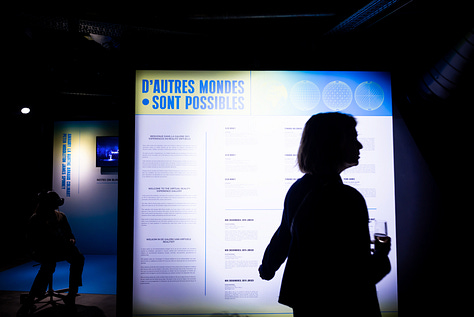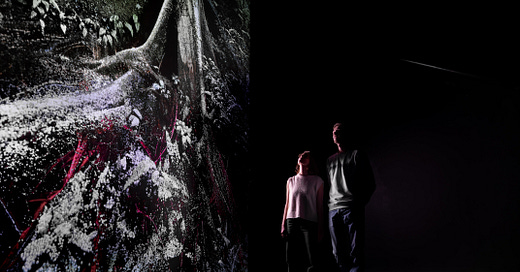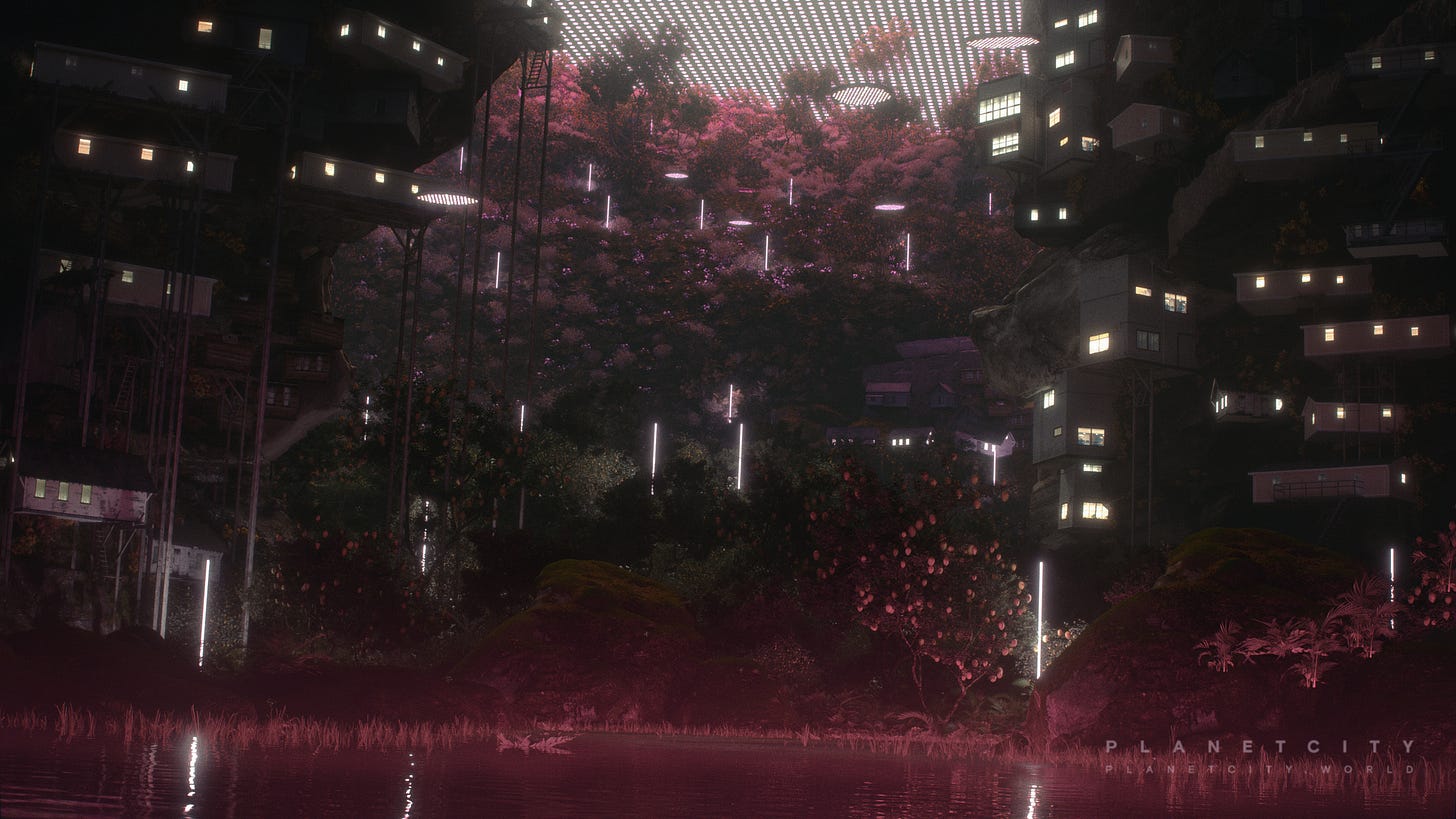Now that the exhibition in Namur is open and in the hands of the public, I’m reflecting on the process of its creation, observing people as they discover what has been announced as Belgium’s first exhibition entirely dedicated to immersive art and storytelling. Other Worlds Are Possible explores the role of VR/AR, and spatial technologies in the past decade of the digital media landscape, and—what I want to focus on in this note—the genealogy of immersive art through the lens of art, theatre, and film history.
For those primarily interested in the virtual reality programming and our approach to it, I want to recommend a great conversation I had with Kent Bye earlier in March, where we covered a lot of ground—from the initial show concept and thematic approach to the wider industry context and the selection of 12 (well, actually 13, but I’m going to follow Mahler’s example and cheat on the numbers) virtual reality works presented in two parts across six months.
This show is something that is my attempt to explain to people who've never been part of our worlds to explain to them what brought us here in the first place why have we fallen in love with this medium what kind of opportunities we have seen in this new storytelling tool but also what kind of opportunities we've seen and what kind of stories we want to share with whom we want to build them. And how we want to share them.
And to be very frank and without going too much into detail, I'm not sure if I still believe in that dream for many reasons. It's a very difficult moment for many of us. The world is really falling apart as we speak. And a lot of what's happening in our industry is also quite grim. But I wanted to give myself the luxury of having the opportunity to introduce new people to our community to remind myself of why I believed in that dream before.
And the whole historical part that it's also about that, you know, it's people who are innovating in different disciplines. because it was their reaction and counter-reaction to various changes that were happening around them that were somehow triggered by technological acceleration and by the way that technological acceleration was changing the world around them. (Source)
The framing works, created through the lens of spatial and immersive methodologies and worldbuilding practices, are exhibited on the upper floor and include some of the artists I work with often and with never-ceasing passion: Liam Young, Marshmallow Laser Feast, Nancy Baker Cahill, and Wen-Yee Hsieh. The work of these four artists is, for me, an ongoing source of inspiration, and I couldn't imagine, for a whole variety of reasons, a show intended to be a first-ever digital immersive experience for many audience members without including them in the program.
It is fair to say the same applies to the VR program on the lower floor, where I was challenged with selecting only twelve works that are both part of my personal canon in virtual reality storytelling and representative of different creative and narrative approaches, dramaturgical methodologies, aesthetic languages and techniques, and genres. And—last but not least—I had to make sure that my choices were an appropriate first VR recommendation for an almost cross-generational audience, from ages 8 to 99, an audience that has grown up in the very specific, prosperous, and slightly dreamy social context of the city of Namur. The entire utopian direction of the show is partly inspired by the public I observed during the KIKK Festival 2024, when I first visited the city and its blooming festival scene, led for a decade by Marie du Chastel—an artistic director with an ecosystemic vision that reaches far beyond the usual ambition of a festival. Thanks to Marie, I also discovered the magical craftsmanship of Yann Delval, whose overwhelmingly successful Hololens installation Atlas is finally finding a semi-permanent home in Belgium in one of our exhibition spaces.
The works will be on view for quite some time, so if you’re in Europe, take a train on a sunny day and just go. Enjoy your time under the glass dome of the Pavilion, with the timeless green citadel surrounding the hill and generous blue skies covering the soothing landscape of le plat pays. Qui est le mien! En tout cas, cette saison.






"Can we think of a historical introduction to the exhibition?" asked Charlotte Benedetti (Director of Le Pavillion and best partner in crime) when we first met in the café, from which I looked at a massive white hallway with three-meter-tall walls begging for a narrative. I’m not a fan of white cubes, and seeing the empty hangar leading to the dome was a moment of hesitation—how to make it an engaging and memorable experience? But Charlotte’s question was both a blessing and a challenge. A blessing because the space of La Ferme (as the team nicknamed the entry area) is made for a narrative structure rather than actual installations. A challenge because, as far as I can tell, there is no such thing as the history of immersive art—at least not one written in a way I would find satisfying and conclusive.
Which led me to another question: the ongoing struggle of communicating the essence and intention of immersive storytelling and creation to legacy organizations, leaders from more traditional art spaces, and people reluctant to acknowledge that immersive art can, in fact, be a serious discipline. If terminology and language are missing, and there is no history to refer to, a medium is poised to be considered a temporary phenomenon—either doomed to oblivion or destined to be colonized and appropriated by the market (I spoke about it at Remix Summit at the Royal Academy this January).
Keep reading with a 7-day free trial
Subscribe to Ana’s Notes to keep reading this post and get 7 days of free access to the full post archives.







